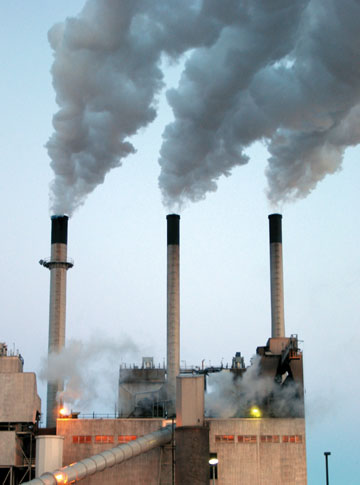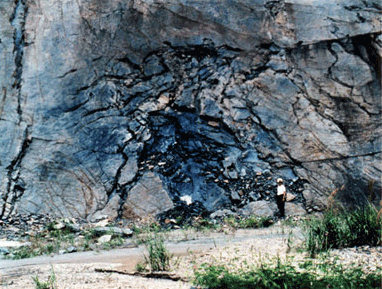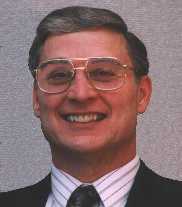
Civilian Nuclear Energy
By Dr. Marshall Berman
Presented to the New Mexicans for Science and Reason, December 3, 2008
Addendum: Comments on a recent US Senate Briefing by Dr. Mark Z. Jacobson


Civilian Nuclear Energy
By Dr. Marshall Berman
Presented to the New Mexicans for Science and Reason, December 3, 2008
Addendum: Comments on a recent US Senate Briefing by Dr. Mark Z. Jacobson

All human endeavors entail some risk, obviously including various methods of generating electricity.
I spent almost 20 years studying potentially very serious accidents at nuclear power plants. Billions have been spent on research and regulation concerning reactor safety and potentially severe consequence accidents.
There have been no nuclear plant-related public deaths in the US, despite the Three Mile Island (TMI) accident (1979).
But after 50 years, there have been no nuclear plant-related public deaths in the US, despite the Three Mile Island (TMI) accident (1979). The worst accident we could have imagined during our extensive research already occurred at Chernobyl in 1986. To date, only 56 deaths (47 workers and 9 children) can be directly attributed to the Chernobyl accident. Possible additional late deaths may approach 4,000, but this would be very hard to measure since so many thyroid cancers occur naturally [UN Chernobyl Forum – Apr 2005: 100 scientists representing 8 UN agencies and Belarus, Ukraine, and Russia]. Even wildlife evidence from the most contaminated areas around the reactor showed no genetic damage or excess cancers in mammals that lived their entire lives in a relatively high-radiation area. (800-1500 mrem/day; average human exposure is about 350 mrem/year; space station ~10,000 mrem; airline crews ~+300; LA to NY ~ 2-3 mrem; X-rays: 4-100 mrem.) (See Wildlife defies Chernobyl radiation, BBC News) (This pales compared to the number of deaths from the Bhopal chemical accident of 1984, which caused at least 3000 deaths, and possibly up to 20,000 later deaths.)
The HBO documentary Chernobyl Heart won an Academy Award in 2003. Unfortunately, "it relies to a shocking extent on scientifically unsupportable claims and in some cases outright falsehoods."
Compare this Chernobyl record to about 5000 coal miners dying each year around the world. Yes, hundred of early uranium miners died of cancer before we understood radiation better. But there have been no cases of illness from uranium mining in Australia and Canada, two leading producers of uranium today.
The resumption of uranium mining in NM has become an important issue. Some of New Mexico’s ore deposits can be extracted through In Situ Leaching. New Mexico conservatively has about $20 billion of known uranium reserves. The Church Rock spill of 94 million gallons of uranium mill tailing into Rio Puerco appears to have had little or no health effects.
The Church Rock spill of 94 million gallons of uranium mill tailing into Rio Puerco appears to have had little or no health effects.
Coal plant air pollution is estimated to cause about 25,000 deaths per year [EPA; see also articles from earth-policy.org and the New York Times].
Operating costs have fallen significantly with about 10,000 reactor-years of experience world-wide. The average capacity factor of US reactors is about 92%, much better than ~60% in the 1970s; this is in part due to reduction of refueling outages from about two months down to about a month or less, higher fuel enrichments (4-5% U235), and from improved operations. A typical plant generates revenues of about $1 million per day, so reducing outage time is very valuable.
Primary considerations are the plant capital costs (billions), the time required to build (many years), and the lengthy regulatory process concerning site permits, plant design approval, and a construction and operating license (COL). They require many thousands of pages, and tens of millions of dollars, even before construction begins.
This process can take up to 10 years, and include considerable finance costs (interest), especially if there are many lawsuits by some anti-nuclear organizations. Many plants were unique and not standardized, which raised costs.
Fuel costs are a small fraction of operating costs. Total nuclear plant costs include decommissioning, waste disposal, and insurance (max available now is $300M). (First $10 billion paid by utilities in Price-Anderson Law.) Current uranium oxide (U3O8) price is about $70/lb. Uranium is about as common as zinc in the earth’s crust. Future reactors can also be designed to use natural thorium (3 times U, ~equal to lead). (A 1 GW fuel assembly contains about 100 tons of uranium dioxide; about 1/3 of the fuel is replaced every 3 to 5years.)
US Electricity production in 2007:
- Coal-49.1%
- Natural Gas-20%
- Nuclear-19.4%
- Hydro-7%
- Petroleum-1.6%
- wind-0.7%
- solar-0.2%
- other ~2%
PNM estimated 2008 costs per kilowatt hour (Albuquerque Journal, June 18, 2006, p. C1):
- Coal: 4.5 cents
- Natural gas: 7.3
- Nuclear: 5.4
- Wind: 6.2
- Solar: 22.2
- [Average capacity: wind-20%; solar-14%]

Coal-Burning Power Plant
Courtesy Phillip J. Redman, U.S. Geological Survey
The best bet is to form large utility groups to use standardized and pre-approved designs, and reuse previously approved applications. [Being done now by Southern Co., TVA, Nuclear Power Oversight Committee, Exelon, Entergy, NRG Energy Co., NuStart (an industry consortium filing several applications for its members), etc.] (AP1000 design licensed by NRC in Dec. 2005.)
As of July, 2008, 9 applications for a combined license (COL) to build and operate new reactors have been filed, and 10 more have expressed interest.
Environmental Effects
A typical coal plant releases about 5 tons of uranium per year, about 13 tons of thorium; the radioactive release to the environment and population dose is about 100 times greater than a typical nuclear plant.

A typical coal plant releases about 5 tons of uranium per year, about 13 tons of thorium; the radioactive release to the environment and population dose is about 100 times greater than a typical nuclear plant.
More than 600 coal-fired plants in the US emit about 2 billion tons of CO2 annually, equivalent to the exhaust of about 300 million autos –- 36% of US CO2 emissions. Nuclear plants do not emit CO2. US nuclear plants also avoid the emissions of 3.4 million tons of SO2, 1.4 million tons of NOx, and about 700 million tons of CO2, as much as half of all passenger cars and light trucks.
Many environmentalists have embraced nuclear power; e.g., Patrick Moore, founder of Greenpeace, British conservationist James Lovelock, and Whole Earth Catalog founder Stewart Brand.
WasteWIPP: After 20 years of research, public input, lawsuits, regulatory struggles both state and federal, WIPP began operations in 1999. To date, no problems.
YUCCA Mountain: After 30 years of study (including 20 years of intense research) and about $9 billion, the repository is still not licensed. The problem is political, not technical. Utilities have so far paid $15 billion into the waste disposal fund, none of which has been used to date. Nevada’s politicians are adamantly against Yucca Mountain, ignoring the fact that Nevada itself had been long used for both atmospheric and underground nuclear explosions for many years. (Originally scheduled to open in 1998, now 2020.) Sandia National Labs and the DOE submitted the Yucca Mountain license application to NRC on June 3, 2008 (Sandia Lab News, June 20, 2008, p.1) (Also see Physics Today, May 2006, p.25)
Temporary on-site storage after ~20 years in dry air-cooled casks: 10 KW from 10 tons. US pays about $300M per year.
Transportation: Waste is transported safely today by rail and truck using containers that have been extensively tested in extreme environments (explosions, crashes, fires) and approved by the US NRC. There have been no radiation releases.
Amount and Decay: Most fission isotopes decay rapidly, except Cs137 (30 years) and Sr90 (28 years) and traces of others like Tc99 (211,000 years – low energy betas). Pu239 has a half-life of 24,100 years but can be used as fuel in current reactors. About 1 cu meter of waste is generated per plant per year. After 40 years, radioactivity is down to one-thousandth of its initial value. After 200 years, the waste no longer generates significant heat; after 500 years, the waste will be less radioactive than the original mined uranium. But waste disposal sites were licensed for 10,000 years. It has recently been extended to a million years.(Albuquerque Journal, Oct. 1, 2008, p. A3)
Oklo: Natural reactors (17 sites) in Gabon, West Central Africa; discovered in 1972; occurred about 1.7 BYA; could have functioned intermittently (few hours?) for more than 150 thousand years, based on the quantity of fission products present. Yield about 100 KW. The majority of non-volatile "fission products (Ru, Nd, and thorium, etc.) from these nuclear reactions have remained in place (few cm to 10 ft) for nearly 2 billion years, in spite of their location in fractured, porous, and water-saturated sandstone for most of that time." Reprocessing the waste would provide significant new fuel (about 25%), and reduce waste, which is already very small.

The majority of non-volatile "fission products (Ru, Nd, and thorium, etc.) from these nuclear reactions [Oklo, Gabon, Africa] have remained in place (few cm to 10 ft) for nearly 2 billion years, in spite of their location in fractured, porous, and water-saturated sandstone for most of that time."
Reprocessing the waste would provide significant new fuel (about 25%), and reduce waste, which is already very small.
Proliferation"In the last 10 years, I’ve seen 200 cases of nuclear material being smuggled across borders. So far, not enough to build a nuclear bomb." Mohamed El Baradei, director general of the International Atomic Energy Agency.
Proliferation in not a problem in the West or Japan, but might be of concern in Russia, Pakistan, Iran or North Korea.
World Nuclear Power StatusAll options should be considered, including conservation, solar, wind, and biomass. But the primary urgent baseload choices are coal and nuclear. I think that based on cost, emissions, radioactivity, and safety, nuclear is the preferred option.

On October 1, 2008, Dr. Mark Z. Jacobson (MZJ) made a presentation to Senator Jeff Bingaman, Chairman of the Senate Energy and Natural Resources Committee. This briefing also referred to supporting material, and some slides. Although there is much in the presentation that I agree with, I believe the nuclear power option was treated unfairly and in a misleading way in several areas.
The briefing and his seminar slides include some conclusions with which I strongly disagree.
1. Life Cycle Emissions (p.7 of slides, p.2 of briefing) says that Wind power emits 24 times less lifecycle CO2 (grams CO2 emitted per kWh) than nuclear power. I believe this is not true. In the chart below, I show a comparison between an IEA (International Energy Agency) report on hydropower, a German study of wind power reported by William M. Connelly (WMC), and numbers that MZJ reported in his slides and also in an e-mail to Jean Brocklebank of New Mexicans for Science and Reason:
| IEA | WMC | MZJ Chart, p7 | MZJ e-mail | |
| Nuclear | 2-59 | 8-65 | ~70 | 9-70, 59, 16-55, 40 |
| Wind | 7-124 | 23-24 | ~2 | ? |
| Coal | 790-1182 | 622-1153 | - | - |
Jacobson’s briefing to Bingaman includes the statement that "Nuclear power puts out about 24 times more lifecycle carbon and other pollutants than wind energy." This starkly contradicts other sources that I consider reliable and unbiased. Comparing wind and nuclear non-CO2 air pollution (IEA) shows nuclear is not very disparate with wind in sulfur dioxide and nitrogen oxides, and lower in particulates: 2 (nuclear) vs. 5-35 (wind).
2.Weapons Risks (p.10 of slides, pp.2-3 of briefing) links nuclear weapons and explosions to civilian nuclear power. This is perhaps like comparing logs in a fireplace to 500 lb bombs. It is completely irrelevant, and it is impossible for low-enriched nuclear fuel to explode as an atom bomb. Furthermore, it has nothing to do with the expansion of nuclear power in the US. Currently, there are 103 US reactors; and 439 total reactors in the world with 35 more under construction, mostly in Asia. Additional domestic US reactors do not increase the probability of using nuclear weapons in ANY significant way. As far as likely targets of terrorists, current reactors could already be targets. But given the multiple levels of nuclear safety and security, hydropower dams, chemical plants, and even hotels and embassies are much more likely targets.
Jacobson uses a quote from a 1981 Los Alamos Report to provide support for considering nuclear weapons in his nuclear energy analysis: "There is no technical demarcation between the military and civilian reactor and there never was one." Although I have not seen the original LANL report, I find it extremely unlikely that this is a comparison between bombs and reactors. This quote could have been taken out of context. No technical differences 'between the military and civilian reactor" could simply refer to similar pressurized water reactor designs in civilian and military ship/sub reactors. I can't imagine equating civilian reactors (controlled criticality) technically with nuclear bombs and their use in war (unless you're just discussing the physics of the fission process).
3. Opportunity Costs (p.9 of slides, p.2 of briefing) can perhaps be considered as double counting by some people. But Jacobson is correct that long delays in coming on-line is an important consideration. However, time to bring new nuclear power plants on-line can be significantly reduced. The US already licensed and built about 100 nuclear plants in 30 years. There is also the underlying assumption that the CO2 during this time period would be based on emissions from the current power generators, half of which are coal-powered, and 20% gas.
As of July, 2008, 9 applications for a combined construction and operating (COL) license to build and operate new reactors have been filed with the NRC, and 10 more have expressed interest. Almost all of these are at currently existing nuclear sites, negating the need for a site license and the time and money involved. Furthermore, the Westinghouse AP1000 design has already been approved by the NRC. Utilities have also formed consortiums that can use standardized and pre-approved designs, and share previously approved applications. This could greatly speed up the regulatory process that slowed the production of existing reactors, and that often included unique designs and construction, and increased borrowing and litigation costs, often caused by opposition from environmental groups. Consortiums are now or have already been formed by Southern Co., TVA, Nuclear Power Oversight Committee, Exelon, Entergy, NRG Energy Co., and NuStart.
Another important factor is that reactors on the same sites would already have access to transmission lines, while wind and solar would almost always require the new construction of such transmission lines and associated hardware.
4. Number of Plants to Run All US Vehicles As Battery-Electric (p.21 of slides and pp. 1-2 of briefing) is one way of comparing low-carbon sources and electricity capacity. Unfortunately, Jacobson has under estimated the mean power capacity of nuclear plants. He lists the power capacity of nuclear power plants as 850 MW and that it would require 202-275 plants to run all U.S. vehicles as battery-electric.
NO nuclear plants are planned for that low power. Most of the current plants are in the 1000 MW range or larger (the two nuclear plants at Palo Verde generated 3200 MW in 2003 and provided electricity for about 4 million people; they are also the only nuclear plants in the world not sited near a body of water; rather, they use treated sewage water from neighboring cities). The already approved Westinghouse AP1000 reactor design is 1100 MW. The ESBWR is 1520 MW. The EPR is 1600 MW. The US-APWR is 1700 MW, twice Jacobson's 850 MW. That would change the number of plants estimated by Jacobson from 202-275 to 101-138. That's a very LARGE difference!
Just extrapolating his wind turbine numbers (p. 21) with corrected nuclear numbers (e.g., plants similar to Palo Verde), says that about 107-146 new nuclear plants would be equivalent to 73,000 to 144,000 5 MW wind turbines and from 4.6 billion to about 12.5 billion 160 W solar PV panels.

About the Author

Dr. Marshall Berman

© Copyright 2008 NMSR and Marshall Berman, All Rights Reserved
Last Update: March 31, 2009